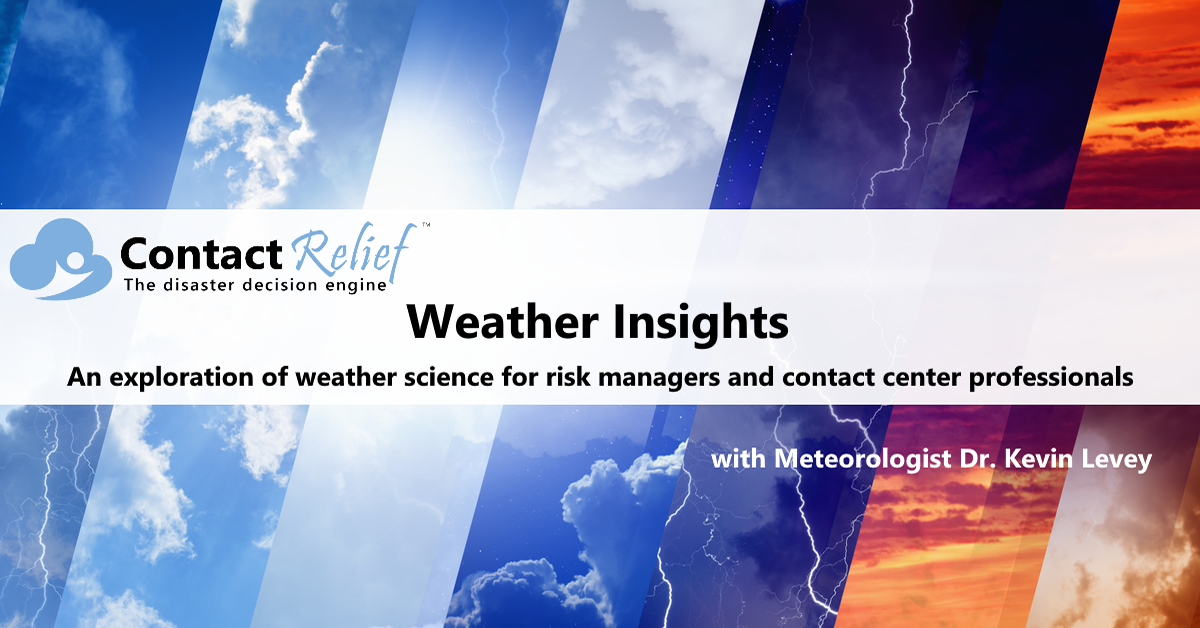
It's Almost Hurricane Season - What to Expect in 2018
Meteorologist Dr. Kevin Levey examines the early forecast for 2018 hurricane activity.
Wednesday, 25 April 2018 08:30:00 -05:00
Atlantic Hurricane Season 2018 Outlook.
I will start this week’s discussion on the upcoming anticipated 2018 Hurricane season with a caveat. That being, April forecasts of hurricane season activity are known to be “low-skill” as they deal with what’s known as the “spring predictability barrier”. All that this means is that this is the time of year when El Niño/La Niña generally undergoes rapid changes from one state to another, making it rather difficult to predict whether an El Niño, La Niña or neutral conditions will prevail during the upcoming Atlantic hurricane season. Case in point was Colorado State University’s (CSU) April 2017 hurricane forecast. Last year’s CSU April forecast called for a slightly below-average Atlantic hurricane season for 2017, with 11 named storms, 4 hurricanes, 2 intense hurricanes, and an Accumulated Cyclone Energy(ACE) of 75. This forecast ended up being far too low, as the season actually had 17 named storms, 10 hurricanes, 6 major hurricanes, and an ACE of 226.
So, what is the forecast for 2018? Based on their April 5th forecast, CSU is calling for a slightly above-average Atlantic hurricane season with 14 named storms, 7 hurricanes, 3 intense hurricanes, and an Accumulated Cyclone Energy(ACE) of 130. The long-term averages for the period 1981 - 2010 were 12 named storms, 6.5 hurricanes, 2 intense hurricanes, and an ACE of 92. The CSU outlook also calls for a 63% chance of a major hurricane hitting the U.S. in 2018 (long term average is 52%), with a 39% chance for the East Coast and Florida Peninsula (long term average is 31%), and a 38% chance for the Gulf Coast (long term average is 30%). The Caribbean is forecast to have a 52% chance of seeing at least one major hurricane (long term average is 42%).
The only issue right now is whether or not El Niño develops this summer. Why is this important? If El Niño conditions are present this fall, this would tend to favor a slower-than-usual Atlantic hurricane season due to an increase in the upper-level winds over the tropical Atlantic that can tear storms apart (higher vertical wind shear). There is considerable uncertainty with the future state of El Niño during the 2018 hurricane season. The latest predictions from a large number of statistical and dynamical El Niño models show a large spread by the peak of the Atlantic hurricane season in August-October. About 1/3 of all forecast models are calling for El Niño conditions, with all but one of the remaining models calling for neutral conditions.
CUS’s next hurricane forecast, which have shown considerable skill (accuracy) over the years, will be released on 31st May, and we will revisit the updated forecast then.
Get in touch
Shaping your outbound contact away from disaster stricken areas isn't just the right thing to do, it's smart business. To learn more about how ContactRelief can help you protect your brand, reduce your risk of adverse actions, and improve your contact center efficiency, click below to contact us.
Contact us